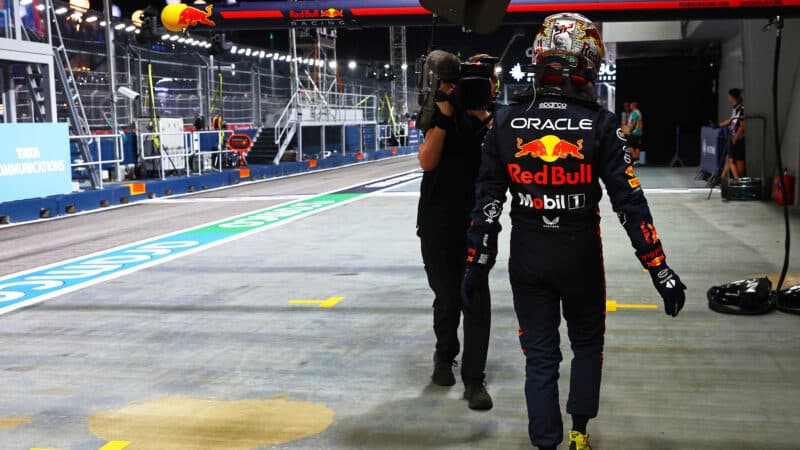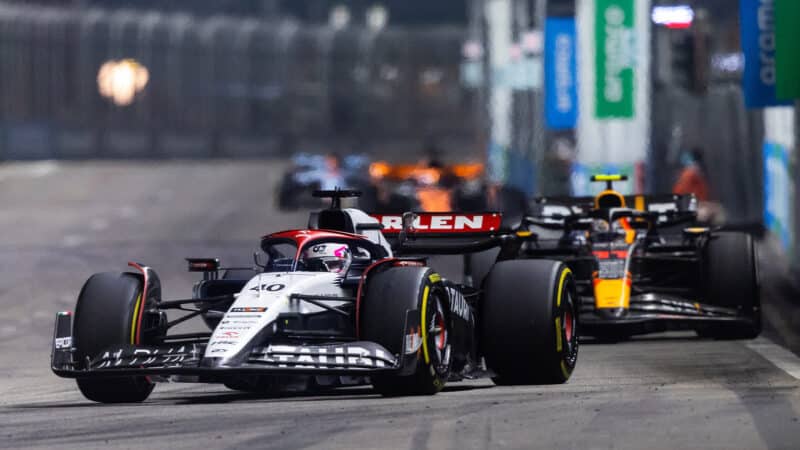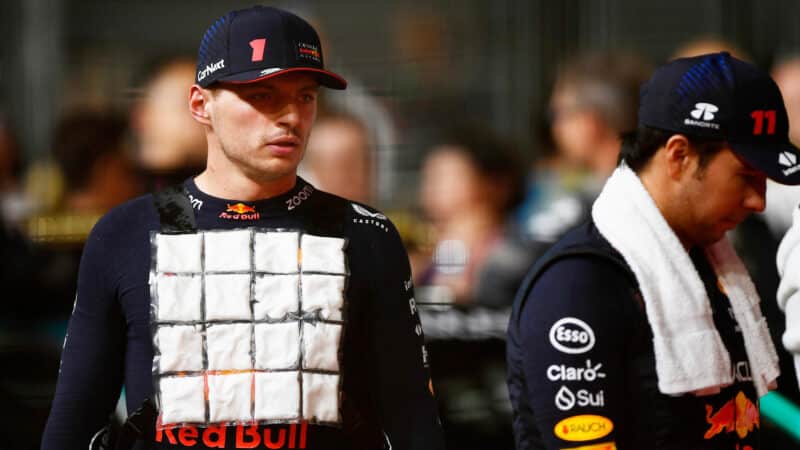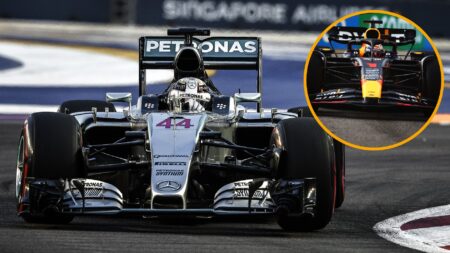The car advantage is arguably bigger than it was a year ago – or at the very least comparable – so while Singapore has proven to be a bogey track for a dominant team in the form of Mercedes in the past, there was little to suggest it would be such a problem this time round for Red Bull given Sergio Perez’s win 12 months previously.
Even with Verstappen stating it would be a tougher challenge than the preceding races and a circuit that didn’t really suit Red Bull, the car has always worked well enough on any layout and the team and driver have combined to ensure victory at every race so far. But if that still hadn’t felt an impressive achievement, then Singapore highlighted just why Red Bull was getting so much praise as it dominated the 2023 season up until the weekend.
How rare has it been to see the leading constructor struggling to get its car into the right set-up window in order to get the tyres working well enough for both qualifying and a race? There had been occasions such as Baku, Hungary and Monza where the smaller gaps on Saturday had seen other teams able to win the fight for pole, but in none of those examples did Red Bull ever face serious opposition for the victory, even if Carlos Sainz made a good go of it for the first quarter of the Italian round.
Even on the few weekends where Red Bull hasn’t had the smoothest of Fridays, the team has been operating on such a high level that it has put itself in the frame on Saturday and then been able to cruise to victory in the grand prix, time and time again.
Yet Singapore was so unusual because there were a number of errors that compounded.

The body language says it all: Verstappen walks away after Q2 qualifying elimination
Mark Thompson/Getty Images
Friday wasn’t a good one for Red Bull, with the car just not in the right working window and the set-up failing to get the tyres to switch on. The team’s starting point was too far off for the Marina Bay Street Circuit, and it had a harder day than usual. But in the past, that’s been fixed overnight.
FP3 was a small improvement but not good enough based on the standard that Red Bull has been setting this year. A switch to a more tried and tested set-up ahead of qualifying was a calculated risk that was both understandable given previous form, but also a sign of how lost the team was: it had no chance to verify it before qualifying began.
The outcome of both cars dropping out in Q2 is one thing, but the manner of it, with Verstappen also caught in impeding incidents that ultimately went largely unpunished, also hinted at a team and driver that were slightly out of sorts.
Having already hit engineering issues — in relative terms — strategic trouble was to follow, but again in an understandable fashion. Both drivers started on the hard compound tyre as Red Bull felt it had to gamble on a well-timed safety car to be able to drag itself back into contention. It was a sign of the mindset that the car could still be competitive in race trim, but not competitive enough to work its way through the field on track given how tough overtaking is.

Perez found himself fighting for 12th place with Liam Lawson
Clive Rose/Getty Images
That backfired too, with the safety car coming out too early for either Verstappen or Perez to ditch the hards for mediums (especially as they only had one set of mediums each), and while they gained track position initially they rapidly lost it as those who had stopped at that point were lined up to attack on fresh rubber.
When Verstappen did finally make his pitstop after enduring some tough laps on old, cold tyres at the restart, even that was timed at three seconds. It might not sound like much but given how regularly Red Bull hits close to the two-second mark, we’re talking 50% slower than we’ve become used to seeing.


